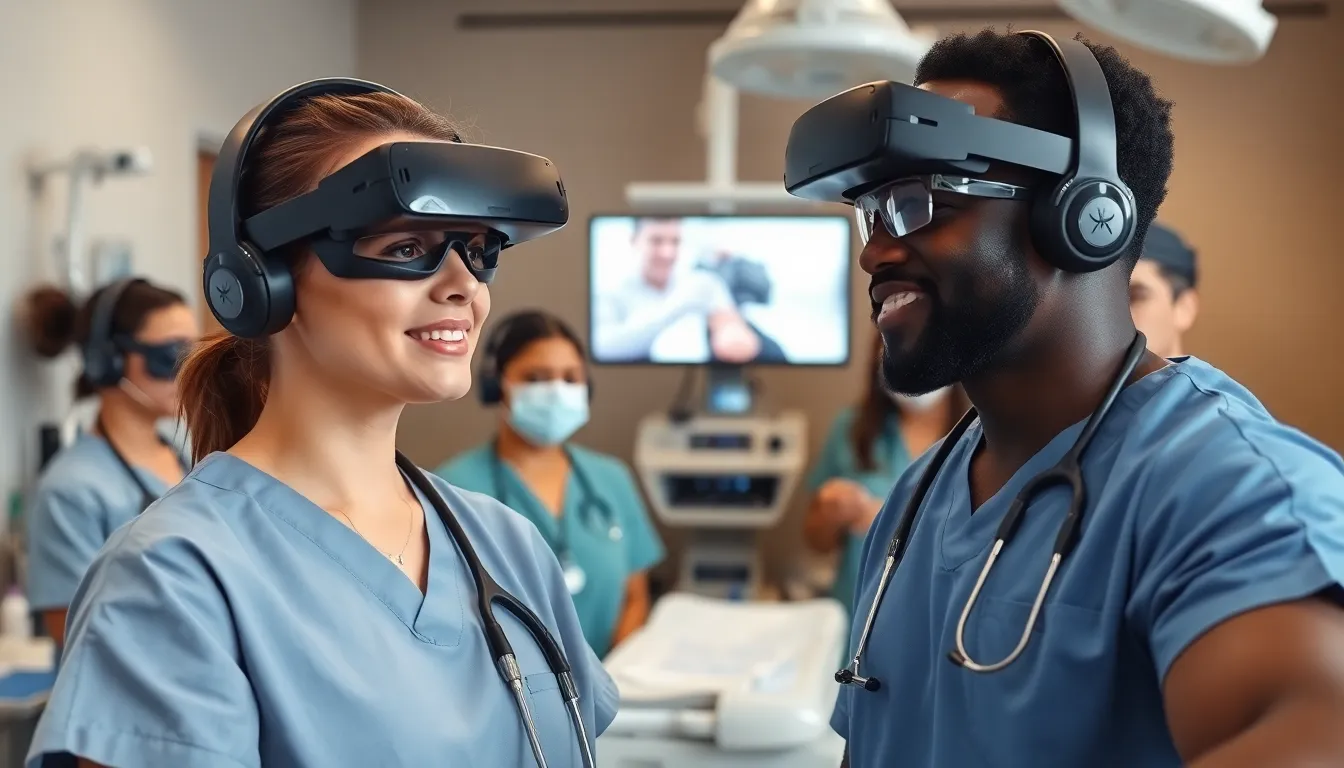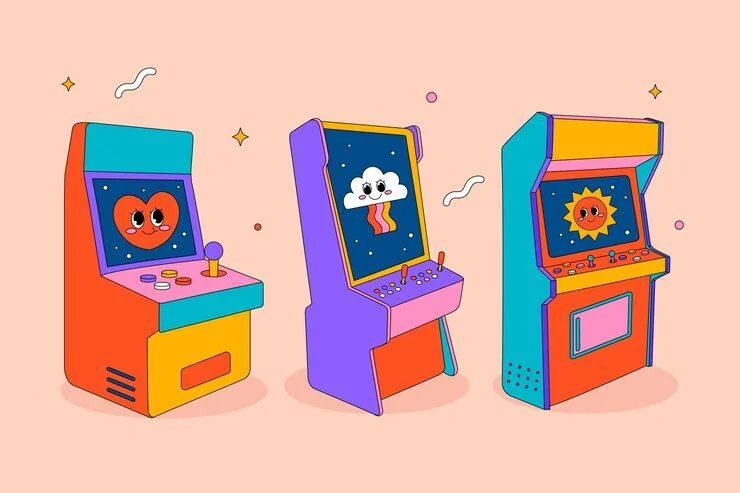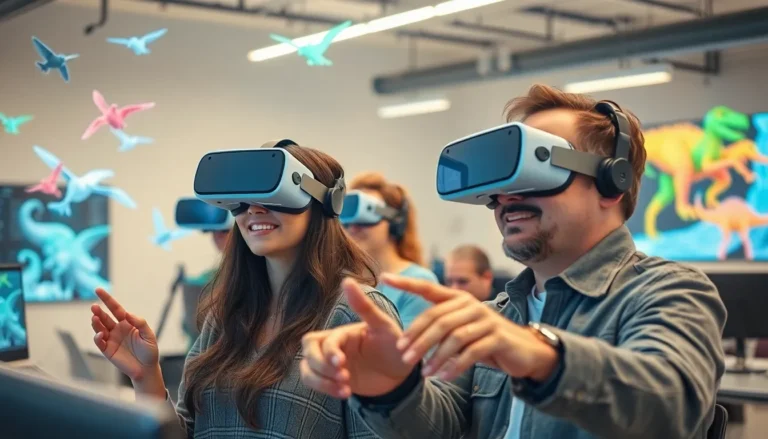Imagine a world where medical students can practice surgery without the pressure of a ticking clock or the fear of making a mistake. Welcome to the realm of Medical VR training, where virtual reality meets the scalpel. This innovative approach allows aspiring doctors to dive into lifelike simulations, honing their skills in a safe environment. It’s like playing a video game, but instead of saving the princess, they’re saving lives.
Table of Contents
ToggleOverview of Medical VR Training
Medical VR training transforms how healthcare professionals develop critical skills. This innovative technology immerses users in realistic surgical simulations, allowing them to practice procedures in a risk-free setting. Aspiring surgeons gain hands-on experience with various techniques and scenarios, enhancing their preparedness for real-life situations.
Using this technology, individuals can repeat procedures multiple times, learning from errors without the consequences of actual surgeries. Each session offers immediate feedback, which aids in assessing and refining skill levels. This approach ensures that students build confidence in their abilities before operating on real patients.
The applications of medical VR training extend beyond surgery. Medical students engage in virtual patient interactions, enhancing their bedside manner and communication skills. Scenarios may include emergency responses or patient education, fostering a comprehensive understanding of patient care.
Statistics show that institutions integrating medical VR training report improved retention rates among students. Studies indicate that students trained in this environment demonstrate higher proficiency in clinical assessments compared to traditional training methods. Several medical schools incorporate VR tools into their curricula, emphasizing its effectiveness in bridging the gap between theory and practice.
Advancements in VR technology contribute to more lifelike simulations. Enhanced graphics, realistic anatomy, and haptic feedback create immersive experiences that mirror actual procedures. Educators find that such realistic training environments facilitate deeper learning, enabling students to connect theory with practical application seamlessly.
Benefits of Medical VR Training

Medical VR training offers significant advantages for healthcare education, providing immersive experiences that enhance skill development. This innovative approach reshapes how medical professionals train and prepare for real-world challenges.
Enhanced Learning Experience
Individuals engage with realistic scenarios, encouraging deeper understanding of complex procedures. By simulating high-pressure environments, VR helps learners improve decision-making skills during critical moments. Participants explore various techniques in a safe setting, allowing experimentation without fear of real-life consequences. Discussions and interactions within the virtual space facilitate a collaborative learning atmosphere. Additionally, visuals and auditory components align with learning styles, making concepts easier to grasp. Engaging narratives within simulations foster emotional connections, heightening involvement in the educational process.
Improved Skill Retention
Studies indicate enhanced retention rates for individuals trained through virtual reality. Participants repeatedly practice medical procedures, reinforcing memory and procedural recall over time. Immediate feedback during sessions allows learners to identify areas for improvement, strengthening their skills. Practicing in immersive environments also promotes quicker adaptation to actual clinical settings. Research shows that students trained via VR achieve higher proficiency levels, demonstrating long-term benefits in skill retention. Engaging with virtual patients and dynamic scenarios cultivates confidence, empowering learners for future challenges in their medical careers.
Applications of Medical VR Training
Medical VR training applies to various fields in healthcare, enhancing the education of medical professionals. Several distinct applications highlight its effectiveness.
Surgical Simulations
Surgical simulations serve as a primary application of medical VR training. They provide a controlled environment for aspiring surgeons to practice complex procedures without risking patient safety. Through realistic scenarios, learners can experience the nuances of various surgeries. Users repeat techniques and explore different approaches, reinforcing their skill set. Each simulation offers instant feedback, enabling participants to identify strengths and weaknesses. Institutions integrating these simulations report significant improvements in student confidence and procedural proficiency. The immersive experience also mimics real-life pressures, preparing students for high-stakes environments.
Patient Interaction Scenarios
Patient interaction scenarios represent another crucial application of medical VR training. Engaging with virtual patients allows future healthcare providers to develop vital communication skills and bedside manner. Scenarios realistically simulate patient emotions and responses, requiring learners to adapt their approach. The emphasis on empathy and understanding enhances the overall patient experience. Feedback from virtual interactions helps students recognize various responses and refine their communication techniques. Medical schools incorporating these scenarios report improved interpersonal skills among students. These interactions bridge the gap between theoretical knowledge and practical application, making graduates better equipped for real-world challenges.
Future Trends in Medical VR Training
Emerging technologies are shaping the landscape of Medical VR training significantly. Innovations in virtual reality offer more immersive experiences, aiding healthcare learners in mastering complex procedures.
Technological Advancements
Enhanced graphics and realistic anatomy create environments that closely mimic real-life scenarios. Increased processing power brings forth high-definition simulations that are more engaging and effective. Improved haptic feedback allows users to feel realistic textures and resistance, further enriching the training experience. Furthermore, advancements in VR headsets enhance comfort, making prolonged use for training more feasible. Recent studies indicate that participants in these technologically advanced simulations show higher retention rates and improved skills. Institutions actively pursuing these technologies benefit from tailored training solutions that meet specific educational needs.
Integration with AI and Machine Learning
Artificial intelligence revolutionizes Medical VR training by personalizing learning experiences. AI algorithms analyze performance data, providing customized feedback and identifying areas for improvement. Machine learning enhances VR simulations by adapting scenarios based on user interactions, ensuring a dynamic training environment. AI-powered virtual patients respond intelligently, presenting realistic challenges for medical learners. Institutions leveraging AI technology see increases in student engagement and skill proficiency. Continuous improvement through machine learning leads to evolving training programs that closely align with advancements in medical practices.
Challenges in Implementing Medical VR Training
While Medical VR training offers significant benefits, several challenges hinder its widespread adoption.
Cost and Accessibility
High costs pose a major barrier to implementing Medical VR training programs. Equipment, software, and ongoing maintenance expenses accumulate quickly, especially for educational institutions with constrained budgets. Limited funding affects access to the latest technology, making it difficult for some medical schools to incorporate VR tools effectively. Additional expenses arise from training the staff to use and implement these advanced systems. Institutions need to secure financial support or partnerships to expand accessibility and create comprehensive VR training environments.
User Acceptance and Adaptation
User acceptance varies among healthcare professionals and students. Some individuals may resist adopting new technologies due to familiarity with traditional methods. Change often requires time and support to ensure comfort with VR environments. Training programs should include orientations to help users adapt effectively, addressing their concerns. Encouraging faculty members to champion the initiative fosters a positive attitude toward using VR in curricula. Open communication about the benefits of Medical VR training can also enhance acceptance, leading to improved implementation across various healthcare education settings.
Medical VR training is revolutionizing the way healthcare professionals learn and develop essential skills. By providing a safe and immersive environment, it enhances the learning experience and builds confidence among aspiring doctors. The ability to practice complex procedures repeatedly and receive instant feedback fosters a deeper understanding of critical techniques.
As technology continues to advance, the potential for Medical VR training only grows. With improved graphics and the integration of AI, future training programs will become even more effective and engaging. While challenges remain in terms of cost and user acceptance, the benefits of this innovative approach to medical education are undeniable. Embracing Medical VR training will better prepare healthcare professionals for the demands of real-world practice, ultimately improving patient care and outcomes.





